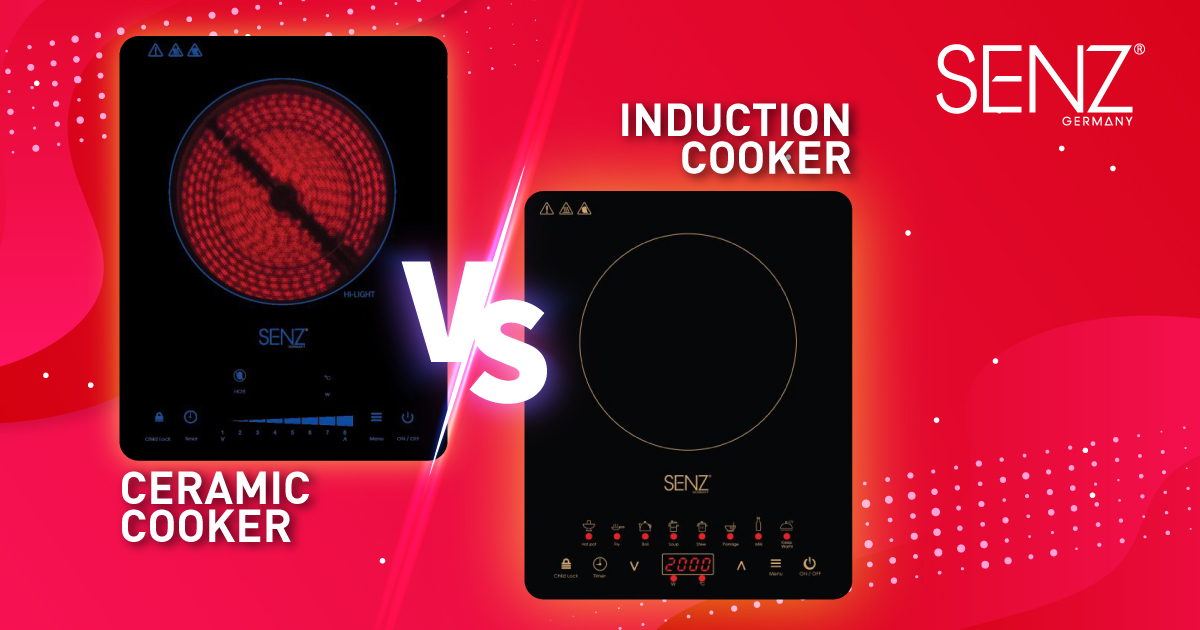Sharings
Buying Guide: The Differences Between Ceramic and Induction Cookers
Electric stoves are an important asset in the modern kitchen. Ceramic and induction cooktops are two of the most best-selling electric stoves. But what are the differences between ceramic and induction cookers? Which is the best?
This article will outline the differences between ceramic and induction cookers from 6 aspects: In terms of their cooking technology, speed and efficiency, suitable cookwares, safety, cleaning and budget.
1. How Do They Work?
The biggest difference between ceramic and induction cookers is how heat is created.
Ceramic cookers use heating elements under tempered ceramic glass that are electronically heated to the desired temperature. The heated element then heats up the ceramic glass surface that consequently heats up the cookware.
Induction cookers contain high-frequency electromagnets. When turned on, these magnets generate a magnetic field that directly heats up the cooking pan and not the cooktop surface.
2. Speed and Efficiency
The speed and efficiency with which ceramic and induction cookers heat up have a direct link to their cooking technology.
Ceramic cookers are slower to heat up than induction cookers because of the heating element that takes time to heat up the ceramic glass surface which then heats up the cookware. There may also be heat lost during the heat transfer between the ceramic glass surface and the cookware.
The magnetic field created by induction cookers on the other hand, instantly heats up the pan with no loss of heat, thereby reducing cooking times.
3. What Cookware Are Suitable?
Ceramic cookers work with any type of cookware – glass, claypot, ceramic, stainless steel, etc. Ceramic cookers work best with flat-bottomed cookwares as it increases the amount of pan that is in contact with the heated up surface, further reducing cooking times.
Induction cookers only work with a specific kind of cookware like cast iron and stainless steel. You can test the compatibility of cookware to induction cookers by placing a magnet on the bottom of the pan; if the magnet sticks to the bottom of the cookware, then it is compatible with an induction cooker.
4. Safety
Both ceramic and induction cookers have a wide range of safety features that effectively reduce the risk of injury to user especially children.
Ceramic cookers retain up to four or five times more heat after cooking. Many models now come with a residual heat indicator so you will always know which zones are still too hot to touch or clean after cooking.
Induction cooker only activates even when switched on until the selected cookware is placed on the cooking zone. Besides, due to its cooking technology, its surface doesn’t get as hot as a ceramic cooker top.
5. Cleaning
When it comes to cleaning ceramic and induction cookers, both usually have flat and smooth surfaces, making them easy to clean by just wiping it down. However, you would have to wait until a ceramic cooker top is cooled down before cleaning it.
6. Budget
The cost of buying and maintaining ceramic and induction cookers differs too. Thus, it is important that you consider your style of cooking and cookware that you usually use, safety consideration at home, as well as energy cost and electricity bill.
Ceramic cookers may be priced slightly higher, whereas induction cookers are cheaper and are a great option for strict budgets.
For further enquiries about SENZ electric stove or our other products, do visit senz.com.my or contact us at: https://wa.me/60192369226
Follow us at:
Facebook: https://www.facebook.com/senz.malaysia
Instagram: https://www.instagram.com/senz.malaysia/
Youtube: https://www.youtube.com/channel/UCn18E5IHS87CykAfEtZBgRg
——-
Disclaimer
This article is updated at the time its publish, it did not intended to benefit any party at anytime.Do contact us for more information in details of our product

